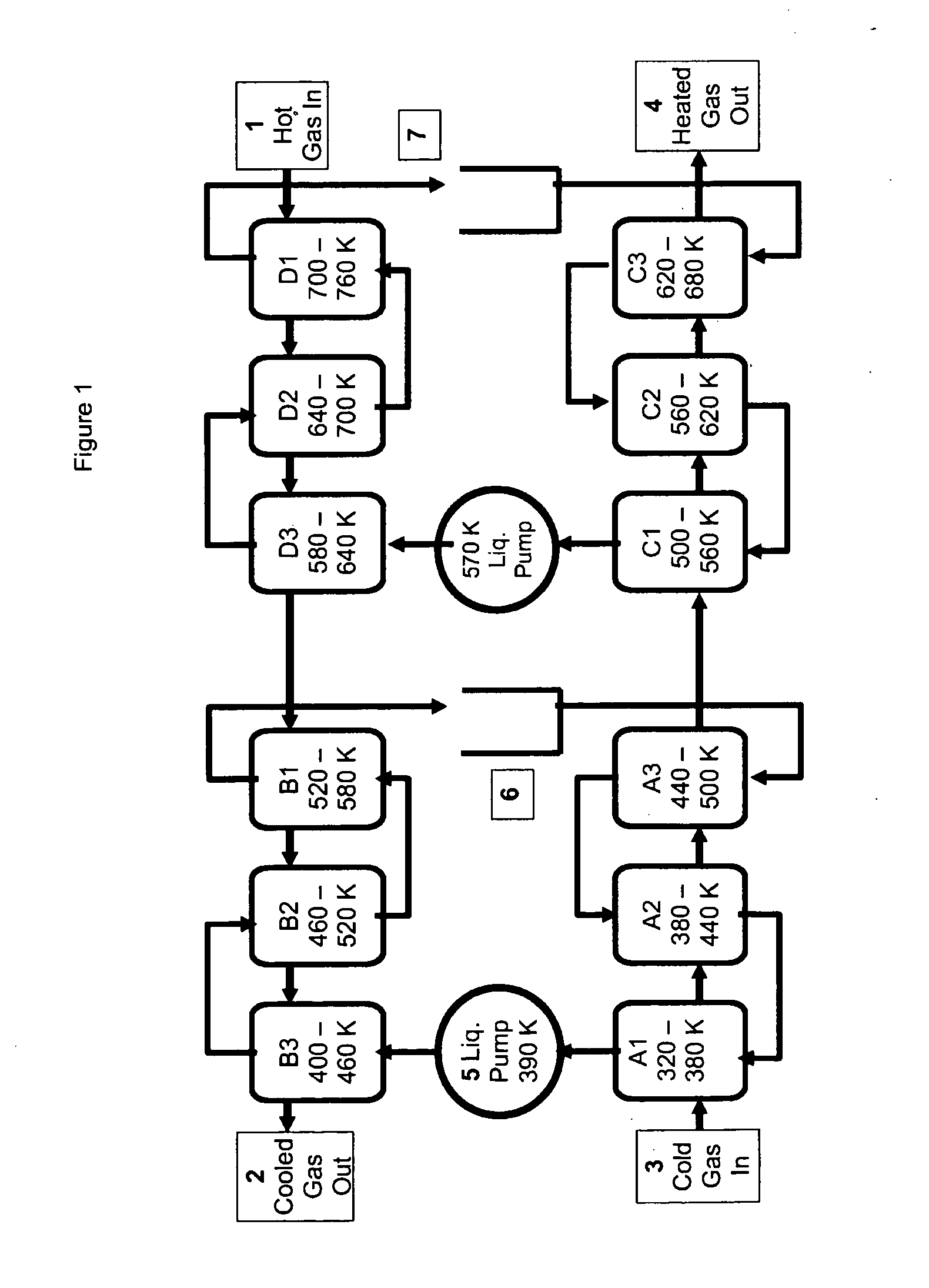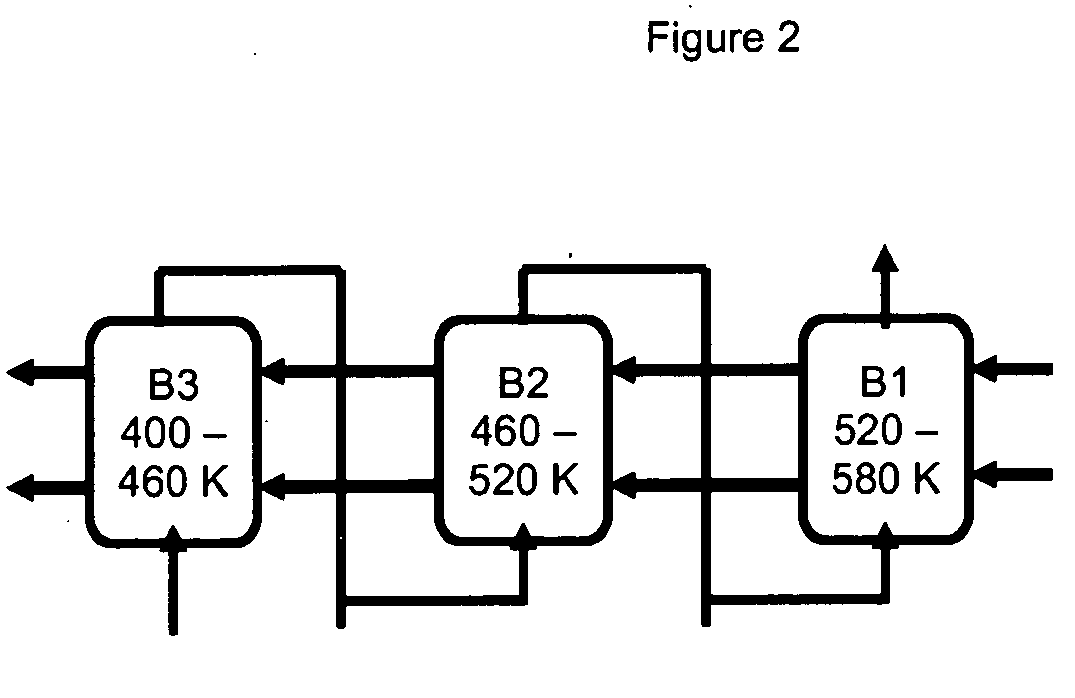Compact, high-effectiveness, gas-to-gas compound recuperator with liquid intermediary
a gas-to-gas compound and liquid intermediary technology, applied in the field of heat exchangers, can solve the problems of limited success of alternative approaches, unachievable objectives, and most of them not aimed at high thermal efficiency, and achieve the effect of effective counterflow exchang
- Summary
- Abstract
- Description
- Claims
- Application Information
AI Technical Summary
Benefits of technology
Problems solved by technology
Method used
Image
Examples
Embodiment Construction
[0049]FIG. 1 illustrates a 4×3 array of 12 liquid-gas cross-flow exchanger cores with 2 liquid pumps and two different heat transfer liquids as an example of a method of achieving high-c recuperation between two isolated fluids of low thermal conductivity, gas-1 and gas-2, identified in the figure using hollow lines. These fluids have mean thermal conductivity less than 0.4 W / m-K (that of H2 at ˜720 K) and will usually be gases with kt less than 0.06 W / m-K. Thus, for improved clarity, they are generally referred to as gases herein, though applications where these fluid streams would be viscous organic liquids are seen in a co-pending patent application. Both gas-1 and gas-2 are shell-side, sometimes also called “fin-side”. In this example, gas-1 is the hot source stream, and gas-2 is the cold stream being heated to nearly the entry temperature of gas-1. Often, the hotter gas will be at lower pressure than the cooler gas, but the reverse relationship is also possible.
[0050]In the exa...
PUM
 Login to View More
Login to View More Abstract
Description
Claims
Application Information
 Login to View More
Login to View More - R&D
- Intellectual Property
- Life Sciences
- Materials
- Tech Scout
- Unparalleled Data Quality
- Higher Quality Content
- 60% Fewer Hallucinations
Browse by: Latest US Patents, China's latest patents, Technical Efficacy Thesaurus, Application Domain, Technology Topic, Popular Technical Reports.
© 2025 PatSnap. All rights reserved.Legal|Privacy policy|Modern Slavery Act Transparency Statement|Sitemap|About US| Contact US: help@patsnap.com



